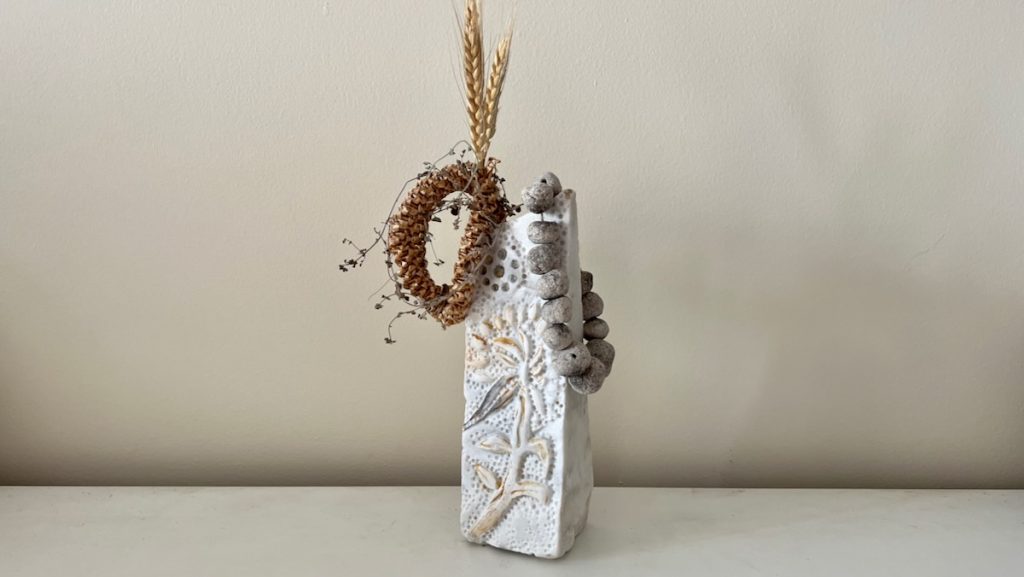
Anna Dumitriu has been working with Dr Carol Verheecke-Vaessen and the Applied Mycology Group at Cranfield University to develop and create an innovative new body of artworks around the theme of “Mysteries and Mycotoxins”. The project takes the form of an artistic exploration of mycotoxins and aims to raise awareness of their significant impact on human and animal health, as well as on the food industry. The project is funded by 2023 Massee Arts Grant from the British Mycological Society.
Mycotoxins are toxic compounds produced by certain types of fungi that can grow on a variety of crops, including grains, fruits, and vegetables, notable mycotoxin-producing fungi include Aspergillus, Alternaria, Claviceps, Fusarium and Penicillium. Exposure to mycotoxins can cause a range of health problems, including cancer, liver damage, and immune system suppression. The World Health Organization (WHO) considers mycotoxins to be a serious public health threat, particularly in developing countries where food safety regulations may not exist or be enforced.
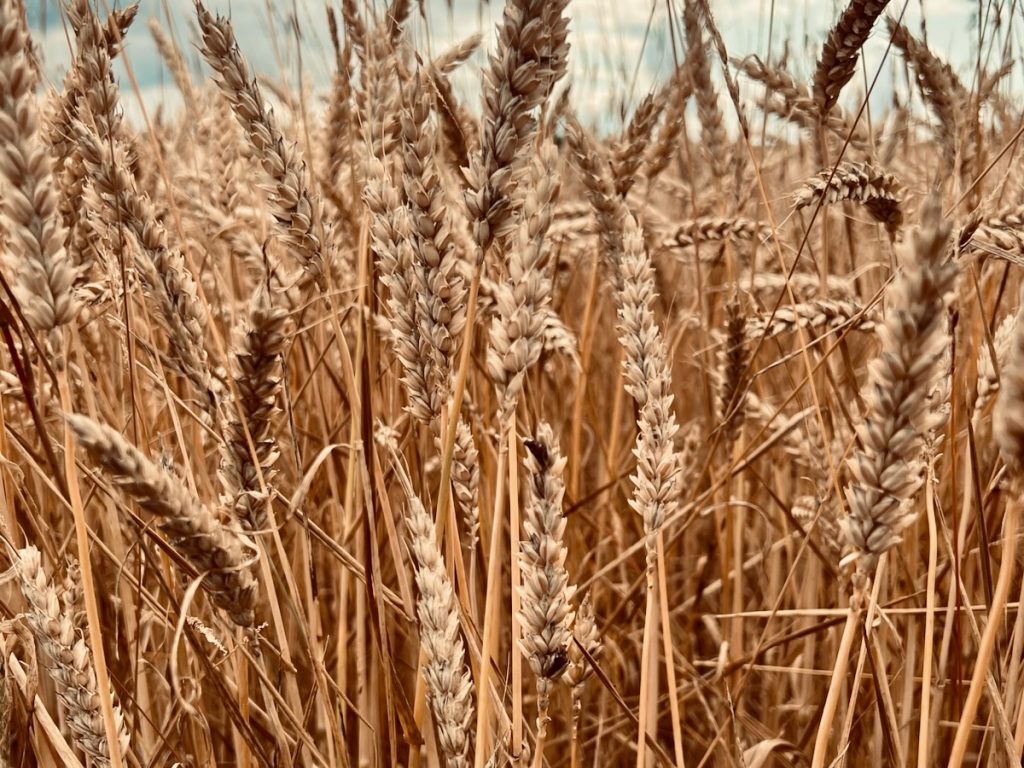
It’s important to prevent the growth of these fungi and to test for mycotoxins in food and feed to ensure they are safe for consumption. The project is also exploring gender equality impacts, as often women have higher exposure to mycotoxins in developing countries as they are responsible for certain critical stages of the farming process. This project is a deep dive into the fascinating subject of mycotoxins which have long intrigued Dumitriu.
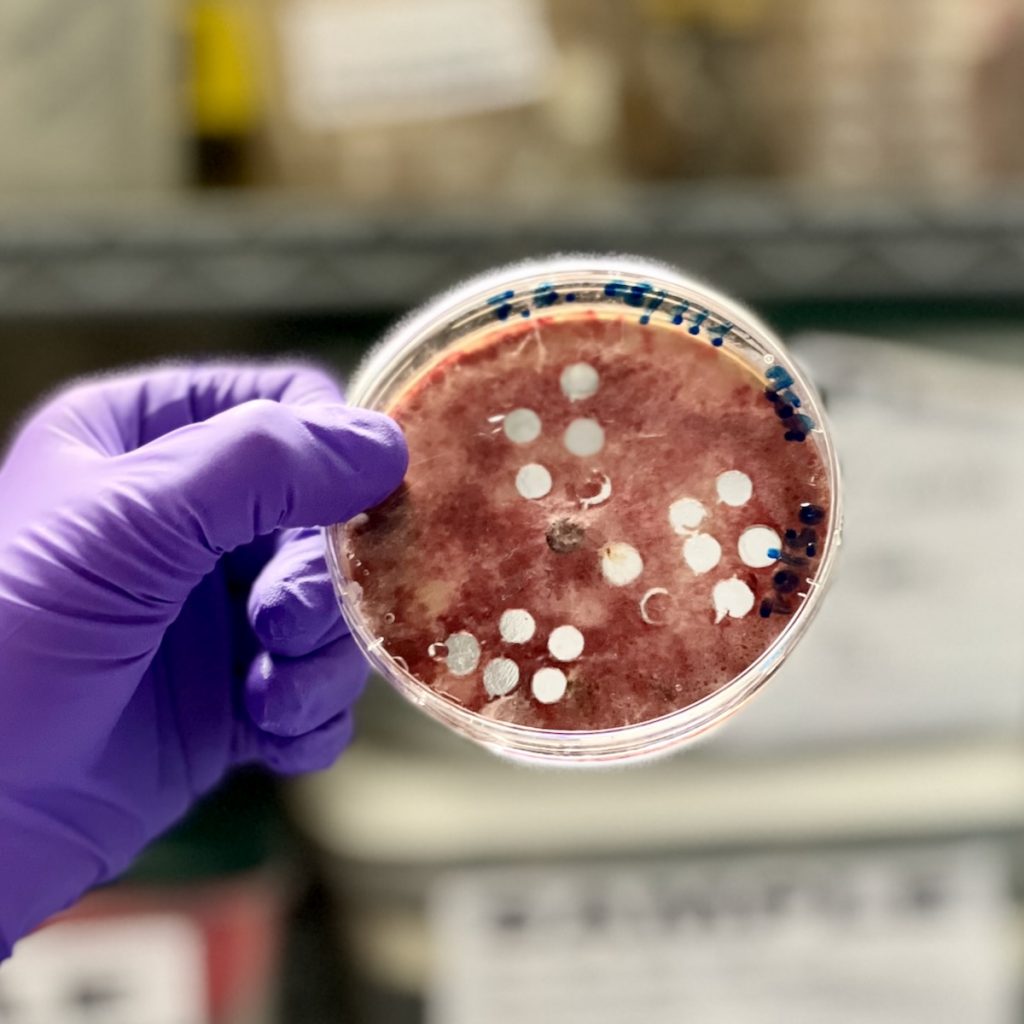
Materials include sterilised pigments from mycotoxin producers such as Aspergillus and Fusarium, bread, marble, and foods studied in the lab, but also involve modern and cutting-edge technologies such as DNA and molecular techniques that show future directions and hopes for mycotoxin research and disease prevention.
The collaborator’s continuing work also explores the impacts that climate change will have on our exposure to these mysterious mycotoxins.
Artworks
The Mysteries (Ergot from Claviceps)

Dumitriu visited and researched the ancient site of the ‘Eleusinian Mysteries’ at in the Attica region of Greece in 2022. It has been suggested that the barley used in the psychoactive brew known as kykeon, which was consumed at the climax of the famous rituals known as the Mysteries, was parasitized by ergot mycotoxins and that the properties of that fungus triggered the intense experiences alluded to by the participants there at Eleusis (Elefsina).
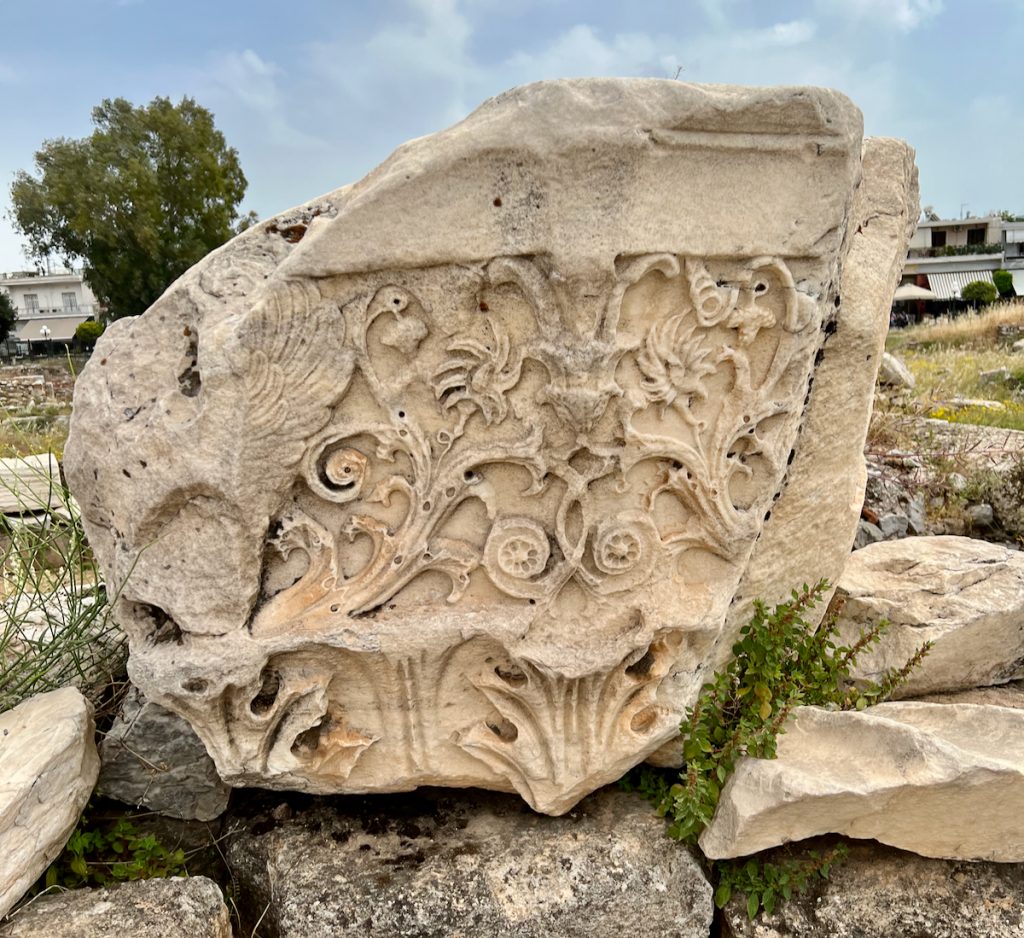
She also visited Salem in 2022 where it has similarly been proposed that the famous witch trials followed an outbreak of rye ergot consumed in bread and that the symptoms of ergot consumption were mistaken for being ‘bewitched’.
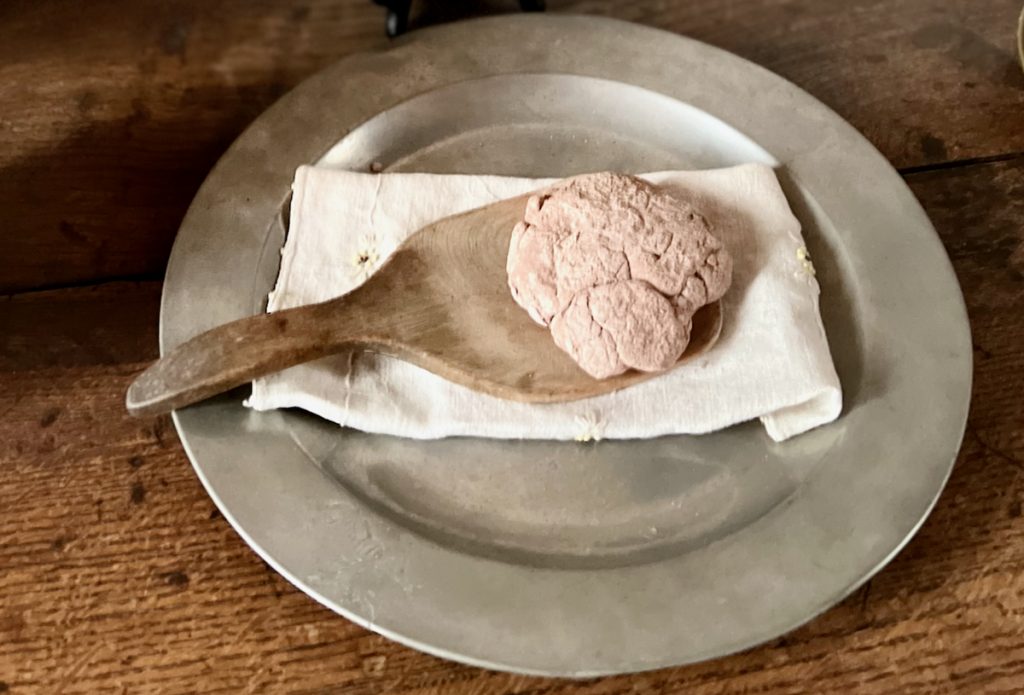
Materials used in the artwork reference these histories and include, incinerated ergot-infected wheat, ‘witches’ bread’ beads from rye with incinerated ergot and trace elements of urine inspired by the Salem Witch Trials, wheat, grasses, string, acrylic paint, dried pennyroyal (Mentha pulegium) (as used in kykeon, and marble which the artist has carved based on carvings she observed at Eleusis, and microscope images of Claviceps mould.
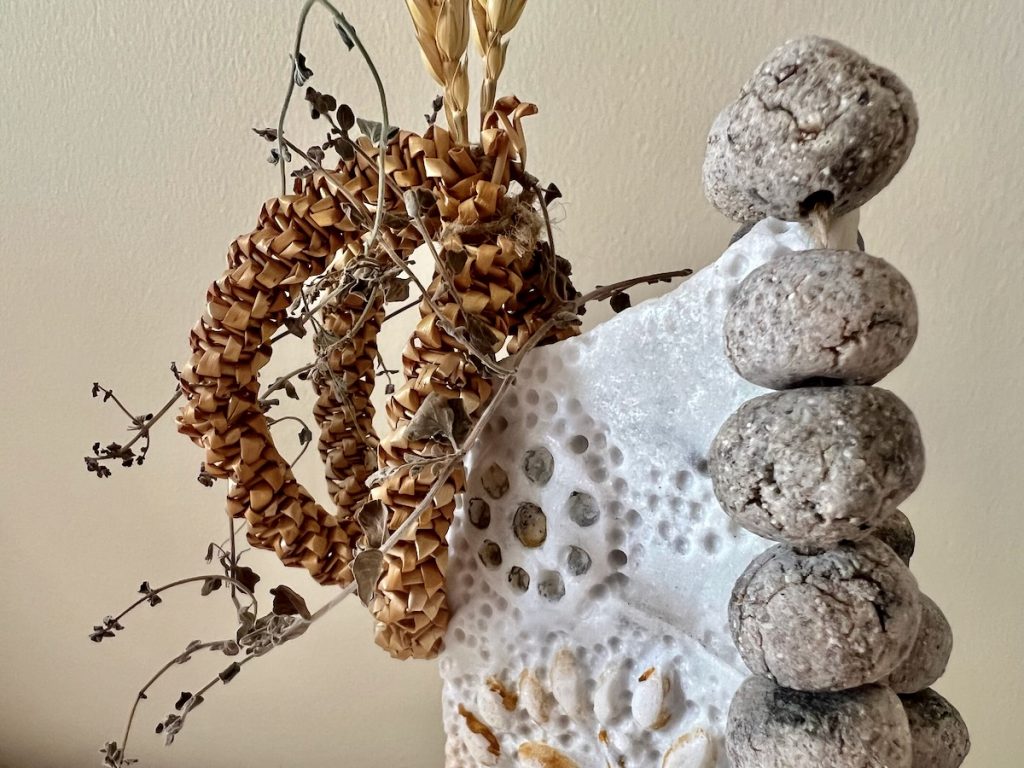
Mycotoxins (Fusarium)
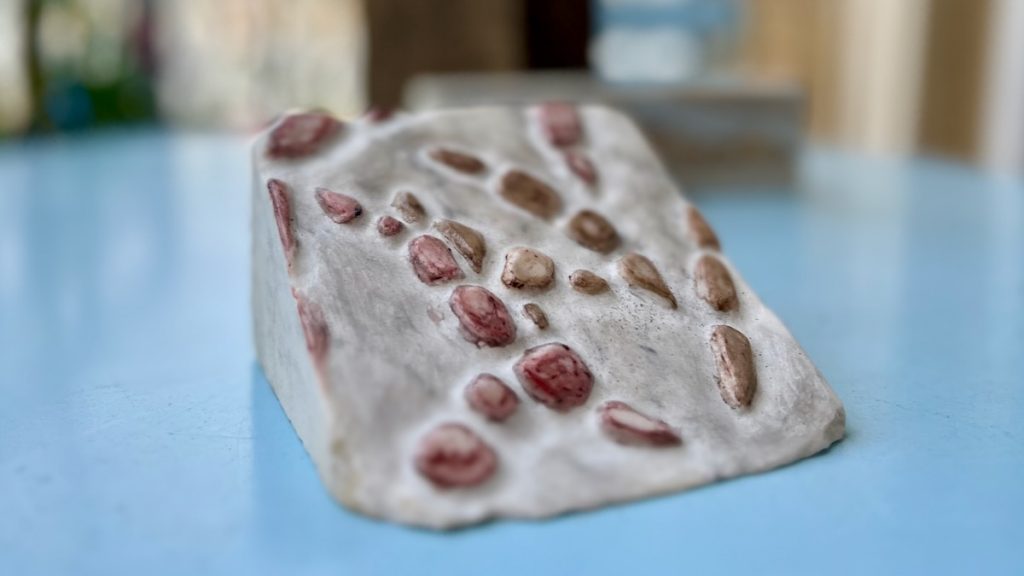
Mycotoxin producing Fusarium species can grow in small grain cereals (wheat, barley, oats) worldwide. They can be toxic to the immune, inhibit protein and DNA production and disrupt the female hormone oestrogen. The artist’s collaborators the Applied Mycology Group (AMG) at the Cranfield University have shown that climate change especially higher temperatures coupled with dryer environment and increased CO2 level in the air can lead to increased toxin accumulation in food.
The Applied Mycology Group, created by Prof. Naresh Magan, has been working for more than 35 years on Fusarium spp. contamination in small grain cereals. The main Fusarium spp. mycotoxins include Deoxynivalenol (DON), T-2 and HT-2 and Zearalenone (ZEN). The AMG has worked on understanding which environmental conditions lead to toxin production by Fusarium spp. and what innovative solutions could prevent the accumulation of toxin.

Marble is always colder than the air that surrounds it, by using this material the artist attempts to hold back the temperature increases of climate change.
The marble is painted red and brown pigments, derived from actual Fusarium mould, incinerated infected wheat and oat and pure cultures of Fusarium spp. with DON and ZEN produced and marble.
Mycotoxins (Alternaria)
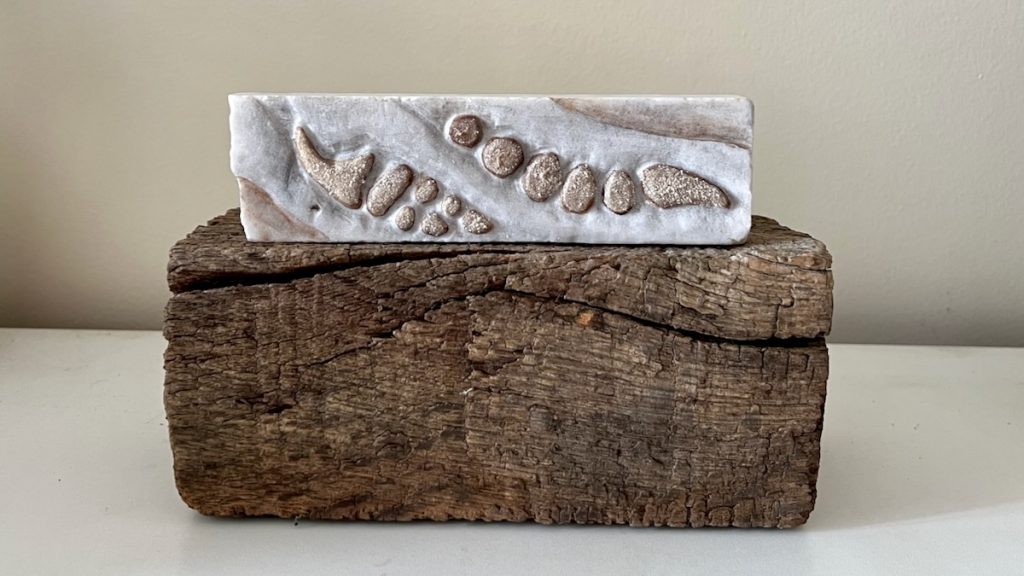
Alternaria spp. are widely present in the environment, many species are either growing on dead plants or can be plant pathogens. The genus can produce mycotoxins that have been detected in a wide range of foods, such as cereals, fruits, vegetables, and their derived products. Among these, cereals, tomatoes, and apples are the most studied foods. Dr Andrea Patriarca, new member of the Applied Mycology Group has already identified the potential accumulation of Alternaria toxins in transformed tomato and apple products and is raising the awareness of monitoring these toxins in food production.
Materials used in the artwork include powdered Alternaria, incinerated infected wheat and oat and Petri dishes containing pure cultures of Alternaria spp. and marble which the artist has carved based on microscope images of the mould.
Aflatoxin Radio (Aspergillus)
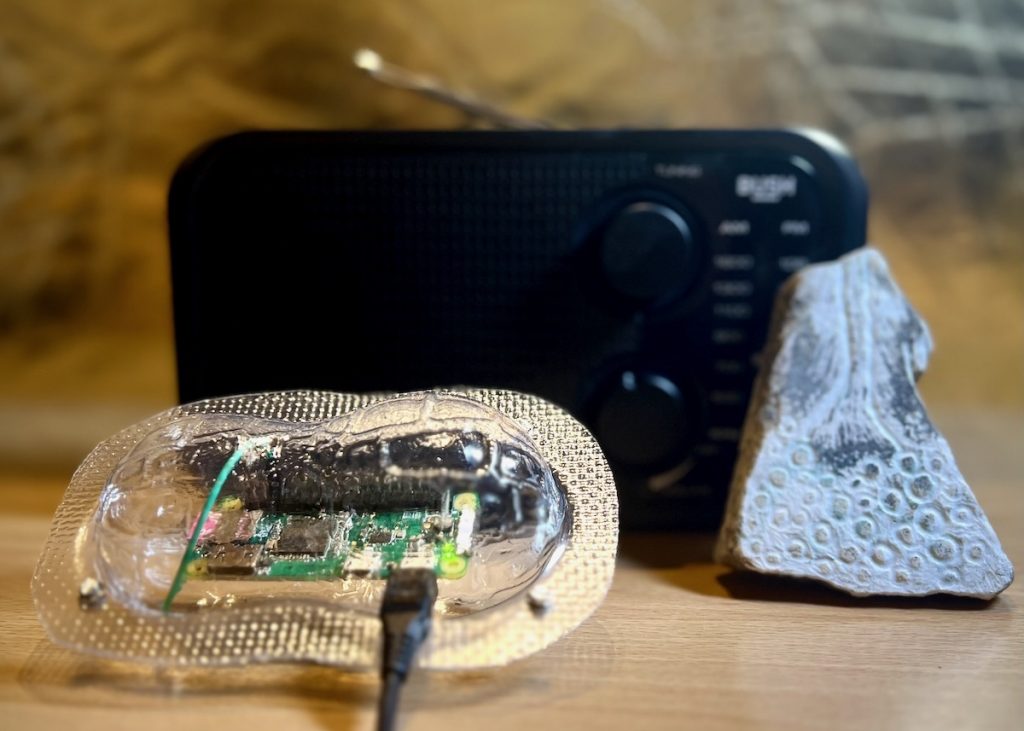
The work explores health inequalities in Ethiopia and the role of radio in the dissemination of training to reach female peanut farmers in rural communities. Training is normally given to males; however, it is the female family members who tend to do the actual farming work and who need to understand how to prevent contamination by Aspergillus moulds and their mycotoxin called Aflatoxin. Female farmers have asked for the training to be disseminated by radio but getting airtime is proving difficult. This work uses a tiny FM radio transmitter based on a Raspberry Pi computer, and nicknamed a PiNut, playing specially recorded training materials in Ethiopian dialects (Amharic and Afaan Oromo) and English, about how to reduce the risk of Aflatoxin from Aspergillus moulds in peanut crops.
Materials used in the artwork include powdered Aspergillus, marble which the artist has carved based on microscope images of the mould, and a vacuum-formed peanut sculpture housing a Waveshare Raspberry Pi Zero PI FM radio transmitter.
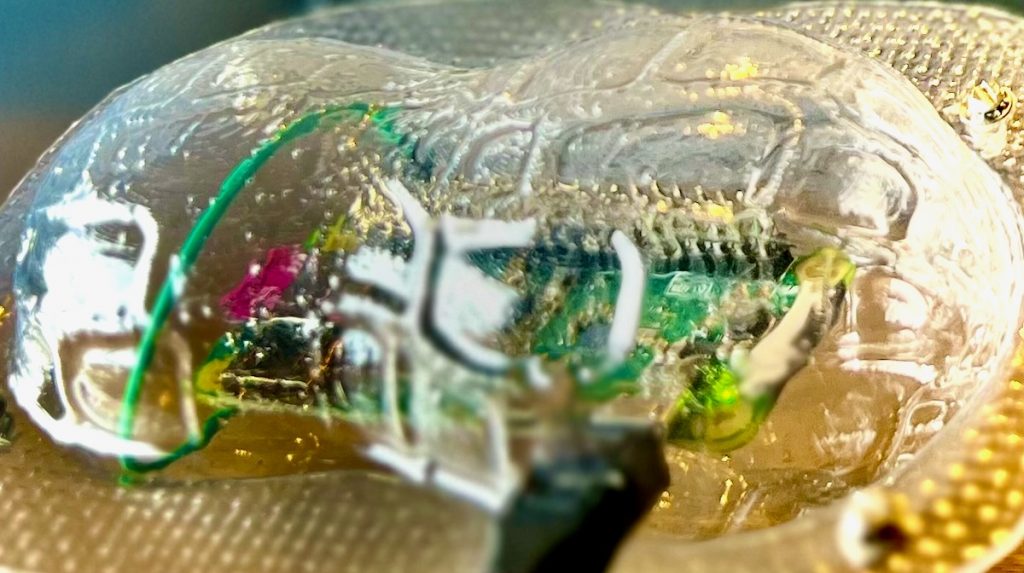
Thanks to Dr Oliver de Peyer for his significant help in creating the FM transmitter, Dr Abdi Mohammed Hassen from Haramaya University and Dr Beimnet Abegaz from Debre Berhan University for their recordings in Ethiopian dialects, and to Dr Carol Verheecke-Vaessen for her inspiration for the project and recording in English. Thanks also to Alex May for his assistance with the audio files.
Mycotoxins (Penicillium)
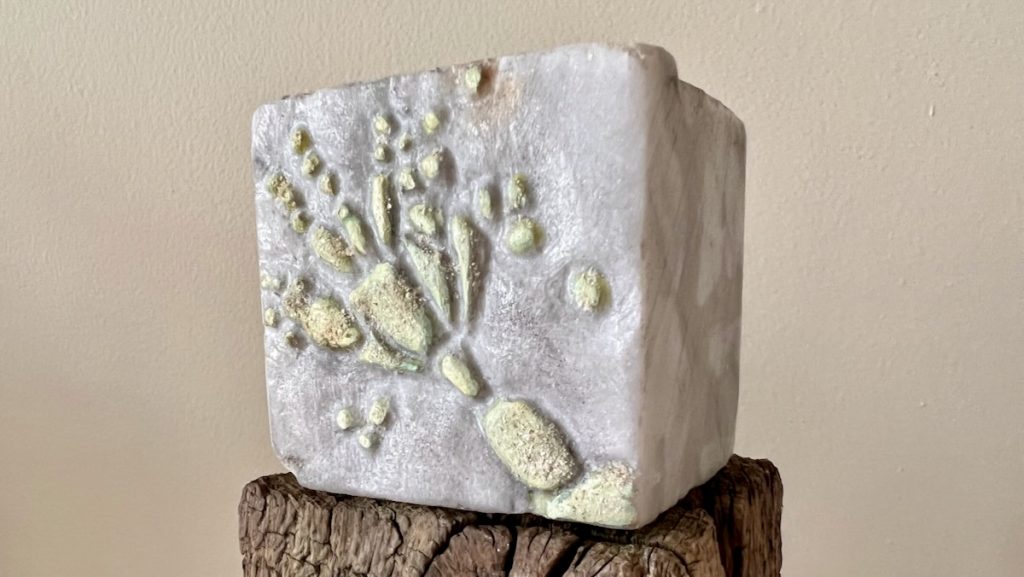
Penicillium moulds can produce mycotoxins. In fact, the first antibiotic Penicillin is a form of mycotoxin which, in the quantities we take it, is not harmful to us, but deadly to dangerous pathogenic bacteria. Other Penicillium mycotoxins, including Ochratoxin A, on the other hand, are dangerous to human health and damaging to stored foods and plant materials, especially in damp conditions which are becoming more prevalent due to climate change.
Materials used in the artwork include powdered Penicillium, marble which the artist has carved based on microscope images of the mould, and decayed wood.
Ash Drawings
It is central to Dumitriu’s practice to work with actual physical biomaterials. Mycotoxins are far harder to destroy than bacteria. Heating or cooking them does not work, but one way to make mycotoxin-producing moulds safe is to incinerate them in a furnace, resulting in ash. Dumitriu has created a series of drawings based on microscopic images of the mould made from the ash that resulted from their destruction.
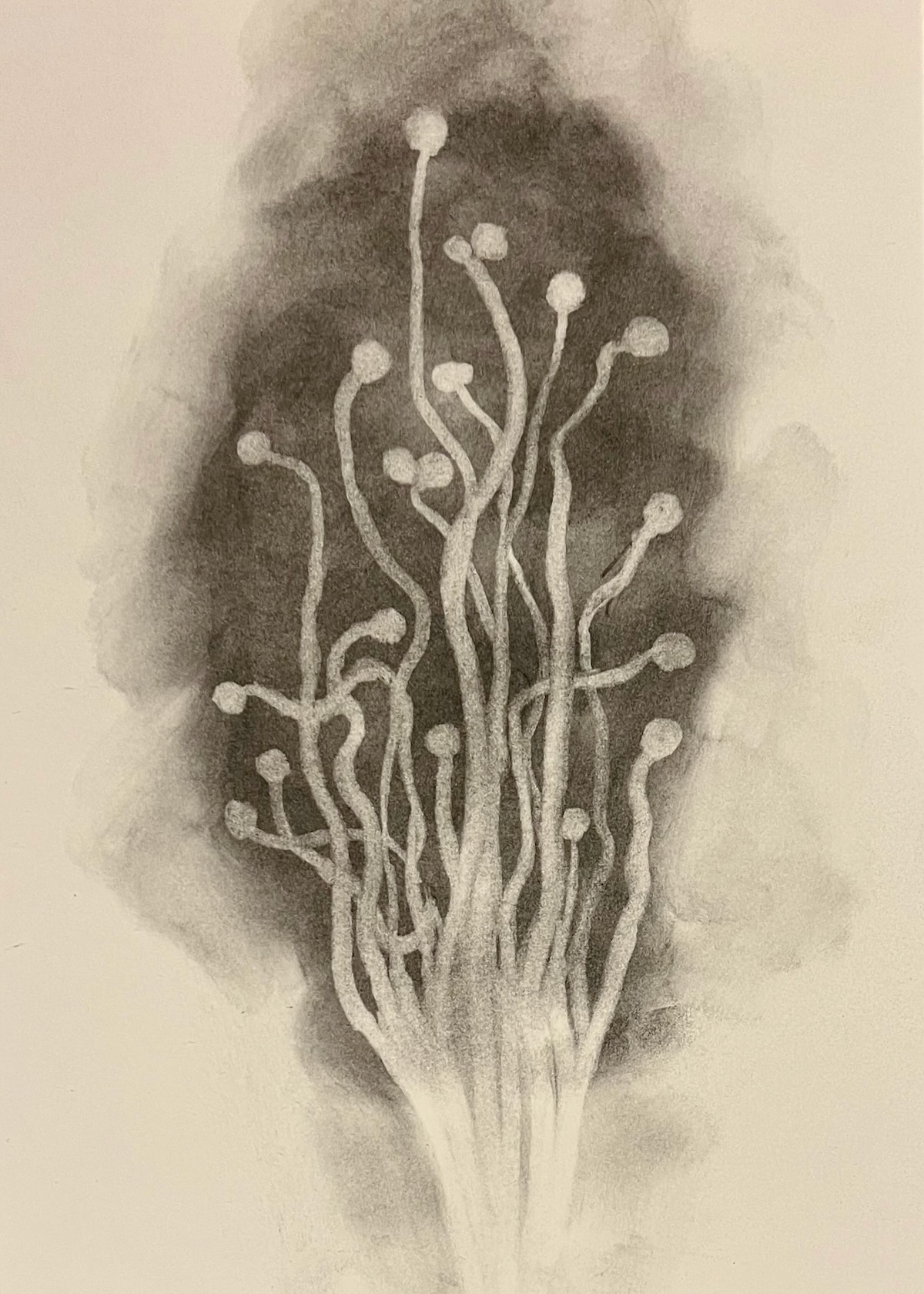
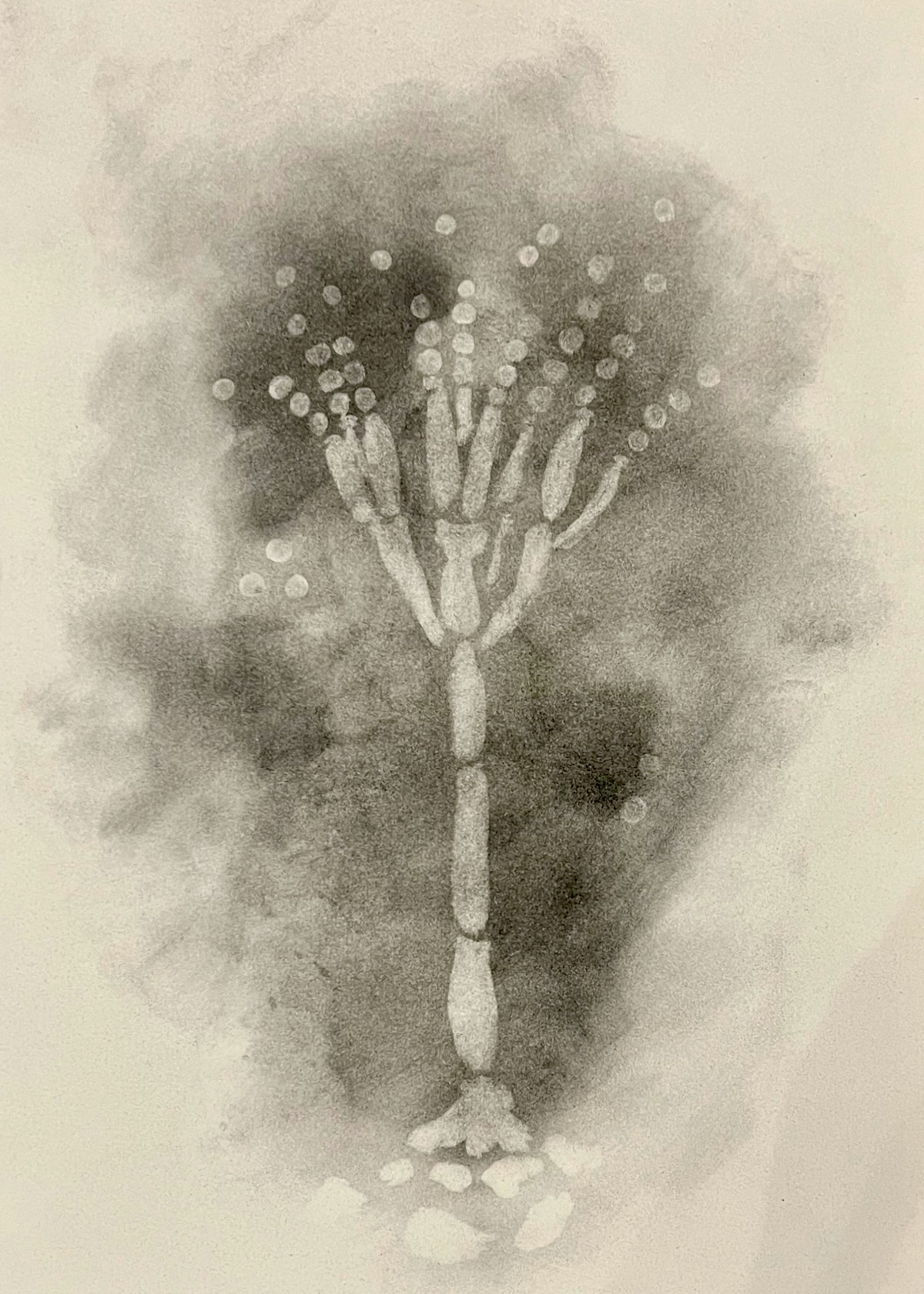

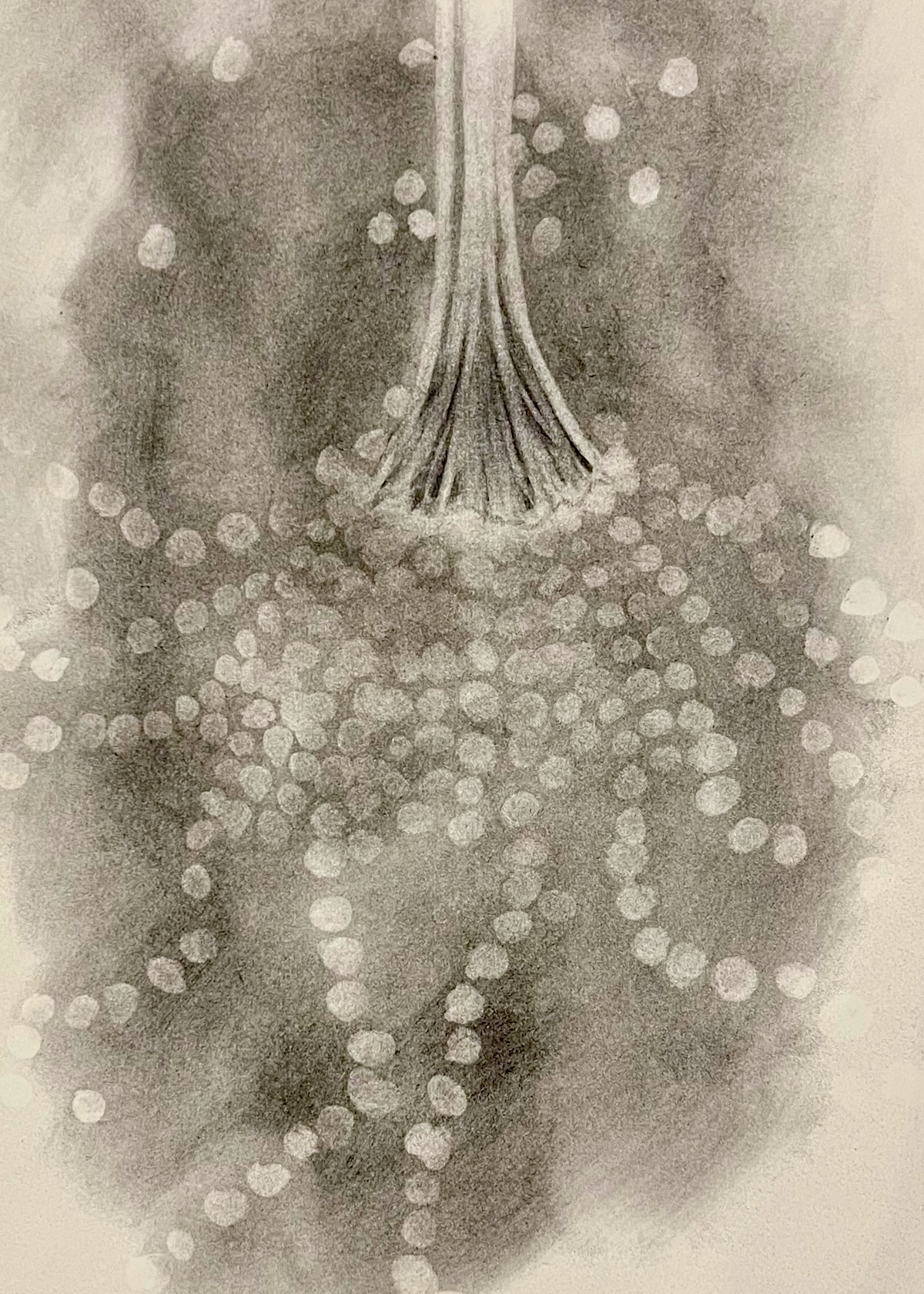

Exhibitions and Outcomes
The project premiered as part of UK Fungus Day in the form of a pop up exhibition and meet the scientists event on 6th October 2023 at Cranfield University.
“BioArt Knowledge“, Yarrow Gallery, Oundle, Near Peterborough, UK, 9th November – 6th December 2023.
“Mysteries and Mycotoxins”, Wellcome Sanger Institute in Cambridge, UK, from 5th June 2024.
Artist’s talk at All Things Fungi Festival 2024, 15th September 2024.
